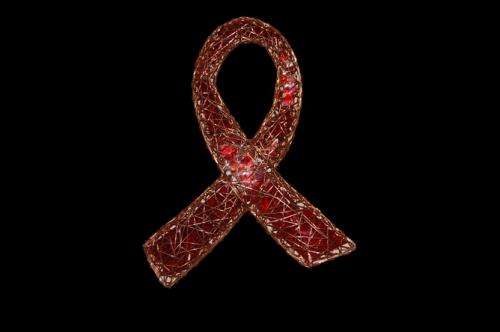In the age of Grindr, HIV support needs to get online

Websites and apps such as Grindr and Scruff are booming as a new way for men to meet other men. But the people who seek to inform men about HIV and AIDS are finding they need to think on their feet to keep up with their migration online.
The people who could once be found in bars and clubs are now hidden behind online profiles and are proving difficult to reach. As part of a research project for the Terence Higgins Trust, a research team I'm part of at the University of Sussex followed one group of outreach workers over the course of the summer in 2013 as they ventured online to provide support, information and advice on HIV to men who have sex with men.
The way in which gay and bisexual men and men who have sex with men (MSM) meet one another has changed radically over the past century, at least in the UK. Legal reforms, equal rights legislation and a growing tolerance (perhaps even acceptance) of male homosexuality has meant the opportunities for meeting in different ways have grown.
In the past, cruising grounds were often the only way to find sexual partners but by the year 2000, more socially acceptable sites of queer congregation had emerged. Gay, bisexual and other men could meet to socialise, hook up and learn from each other in bars, cafes and clubs.
Meting online is the latest evolution, with sites like Grindr and Gaydar offering the chance to socialise in new ways. For the uninitiated, these websites and applications allow users to create a digital profile, upload images of themselves and then use that profile to connect with other users, often for free. Grindr also uses your smartphone's GPS to identify how far you are away from other users. Gaydar's website includes a radio station, chat rooms and a host of other features that allow men to communicate with one another. While these services might be considered hook-up sites, they also offer the opportunity to socialise and hang out with other men online.
The huge numbers of people signing up to these sites is an unmissable opportunity for communicating about sexual health. Grindr app, for instance, is downloaded around 10,000 times per day. Meanwhile Gaydar, one the UK's longest running gay websites has 5.2 million registered users worldwide. But a different approach is needed.
The idea of meeting in a bar or club to learn may seem surprising but it has long been an important part of queer congregation. In 1983, the first AIDS deaths were recorded in Britain. At a time when governments across the world struggled to formulate an appropriate response, it was gay men (and their friends) who started to educate one another about HIV, safe sex and condom use. This education didn't happen in school or at work. It happened on the street, in bars, around the "village" and at the cruising ground. Community outreach has been an integral part of the battle against HIV/AIDS and this work continues today but now needs to get online.
The outreach workers we monitored found that the sense of anonymity and distance created by the computer screen provided an environment in which men could talk honestly about their worries and concerns. This in turn allowed workers to offer the most relevant and appropriate advice to their clients and even refer them to services in their local area.
On the downside though, it seems to take longer to gain the confidence of the people they were talking to on the sites. Where once conversations could be struck up in person, they now have all sorts of hurdles to overcome. Users of online services and social networks said they found it less easy to trust others on the sites and were concerned about being watched.
And although they saw the Terrence Higgins Trust as a reliable source of information about HIV and AIDS, there was a need to go the extra mile to prove the reliability of the information being provided. Online life is filled with hoaxes and scams. Getting users to trust that it really was THT online, offering support, was a major challenge to the outreach team.
There is still very much a need to inform people about HIV and AIDS. There were only 390 deaths from AIDS in the UK last year but HIV transmission rates continue to soar. As of January 2013, an estimated 98,400 people were living with HIV in the UK, including around 22,000 people who did not know they were HIV positive. In 2012 alone, there were 6,360 new HIV diagnoses.
And while outreach workers make sense of how their traditional ways of working can be translated into digital outreach, there may well be a role for apps and websites to play too. The design and architecture of the commercial online platforms that are being used to bring men together with other men could themselves be improved to help outreach.
Unlike a bar, where people can shout across the room or have an intimate tête-à-tête, the design of an app like Grindr or a website like Gaydar means that discussions and chat happen largely out of sight. There is little opportunity for group discussion and outreach teams find it hard to break through and be seen. Bringing in functionality like this might be an important step in making sure the outreach workers can keep up with the new ways in which people are meeting each other in the digital age.
This story is published courtesy of The Conversation (under Creative Commons-Attribution/No derivatives).![]()



















